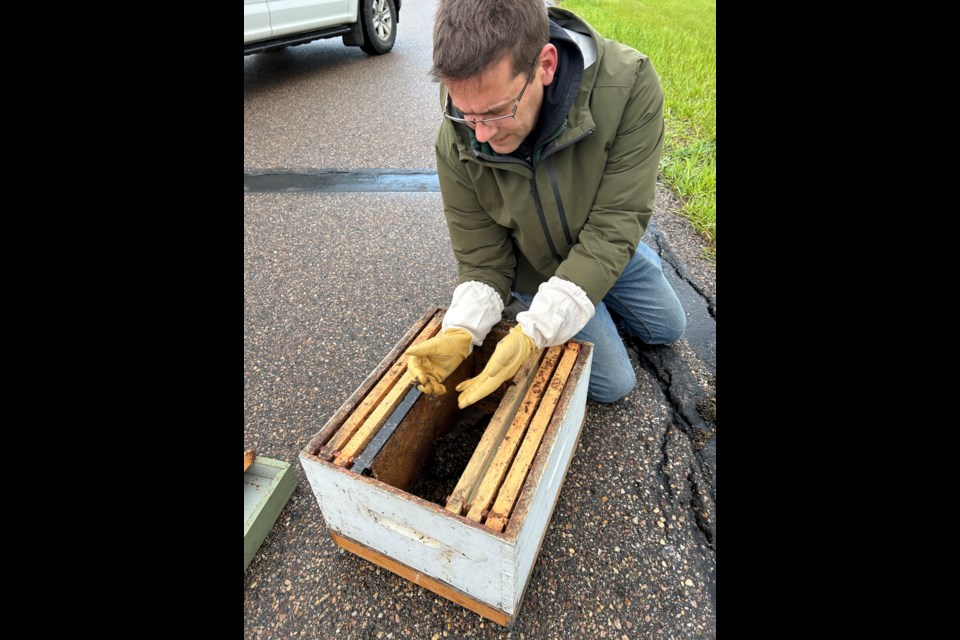Maintenance crews at the Lac La Biche Airport weren’t the only ones busily buzzing through their workday recently, as a swarm of honey bees claimed a portion of the runway as their new home away from hive.
The incident, which took place on June 7 was recently explained to the Lac La Biche POST newsroom by Barry Feledichuk, the urban transportation supervisor for Lac La Biche County’s Transportation Services. He said the bees were noticed during one of the daily routine runway inspections late that afternoon. The bees – several hundred of them – had filled a cracked section on the shoulder of the runway. The swarm had been there for a relatively short period of time as they had been absent during the morning inspection, he said.
“The bees settled down on the runway near the Air tanker base,” he said
Aircraft responding to regional forest fires at the air tanker base, as well as commercial and private aircraft use the runway on a daily basis.
Feledichuk said a notice was immediately sent out to local pilots and regular users of the airstrip. The Notice to Airmen, or NOTAM, cautioned anyone near the airport to “bee” aware of the situation. Feledichuk said a local apiary was contacted for assistance to safely remove the bees. Air traffic was disrupted, he said, for about an hour as the bees were safely scooped up, put into temporary hives and taken to the Christy Creek Honey farm, south of Lac La Biche.
Saving the bees
It might seem like a lot of disruption and a lot of work for some insects, but Feledichuk said it was a decision made for the good of local pilots, airport staff – and the bees as well. He said honeybees are having a tough enough time around the world without being killed for where they choose to rest.
“With the decline in honeybee populations, I wanted to save them for the benefit of our planet,” he said.
Local beekeepers Rob and Joanne Wicker, who own the Christy Creek Honey farm said they weren’t too sure what to expect when they got the call.
“It was a very cool windy day and it had been raining hard most of the afternoon, so we didn’t know what to expect,” Wicker said.
When they arrived at the local airport, the Wickers were able to find the swarm, which had become a small mound on the concrete. Wicker said the cooler weather and rain had made the bees into a ‘clump’. He wasn’t sure any of the insects would survive. As he peeled the clump off the runway, he saw little movement from the bees.
“It was just a soggy, unmoving pile of bees,” he said.
The Wickers got as many of the bees into a temporary box and returned to their farm. They weren’t holding out a lot of hope for a full recovery. But they were holding a hairdryer – using the warm air to try and revive the motionless and wet bees.
After a few minutes, said Wicker, some individual bees started to move about. As the heat spread, so did the movement. Next, the beekeepers put a frame of honey in the hive box with them, put a lid on the box, and left it in their greenhouse overnight to warm up.
By the next day, he said, the bees had warmed up, dried off, and were eager to get out of the small hive.
The bees were moved to a larger hive in the Christy Creek apiary where Rob says they have “settled in.”
The Wickers are not sure where the bees may have come from, perhaps another apiary, or a natural hive disrupted by the steady rains that held over the region through most of June.
For now, the rescued bees are busy making honey and seem to have no plans to run away ... to a runway or anywhere else.
“They have settled in and are busy making honey and pollenating the world around them.”



